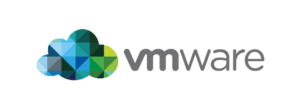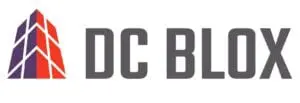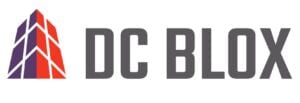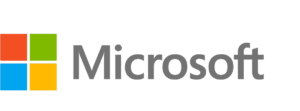As a company grows, an IT budget should be a considerable part of that growth strategy and plan. A proper IT budget can create a clear path to successfully achieving company goals, while also keeping costs at the forefront of the organization. With this, accurate forecasting and planning become easier, allowing for informed decision-making and risk mitigation. As a result, businesses can achieve better efficiency, greater cost savings, and improved return on investment just simply by planning with a proper IT budget.
“If you fail to plan, you plan to fail.”
–Benjamin Franklin
Complete Article Outline
An IT Budget That Addresses Company Needs
Allocating funds for IT budgets is paramount, particularly for growing companies that lack well-defined information technology fiscal strategies. By instituting a categorized IT budget, organizations can purposefully direct money to the right technologies and solutions, enhancing operational efficiency, security, and growth capacity. This also guarantees an allotted amount of funds to be directed toward modern security software and hardware, training for employees, and regular maintenance on things that would typically not be a priority to the operational and sales side of the business. Having an IT budget aids in the effort of keeping a watchful eye on where technology can or should be upgraded. Simply speaking, a comprehensive IT budget can be the lifeblood of todays online business.
Let’s look at the different categories of budget considerations within your organization’s IT department.
IT Network & Hardware – Budget Considerations
A robust IT network is vital for growth, so crafting an effective IT budget without accounting for the costs of a scalable and growing network would be unwise. This section of the article explores three key cost considerations when exploring a growing network infrastructure:
- Network Infrastructure Expansion and Upgrades
- Scalability and Redundancy
- Network Security Measures
As you explore these topics below, you’ll see that each of these are essential for sustaining efficient operations and ensuring network resilience.
Network Infrastructure Expansion and Upgrades
As a company expands, its IT network infrastructure must accommodate the increased demand for connectivity, bandwidth, and data storage. This might involve adding new networking hardware, such as routers, switches, and access points, or upgrading existing components to support higher data volumes and faster communication. The cost of purchasing, installing, and configuring these hardware components should be anticipated in the IT budget.
Scalability and Redundancy
With growth comes the need for network scalability to handle higher user loads and increased data traffic. Businesses must plan for redundancy and failover mechanisms to ensure network availability and minimize downtime. This could involve setting up backup internet connections, redundant network paths, and data replication across multiple locations. The associated expenses, including additional hardware, software licenses, and maintenance, should be included in the budget.
Network Security Measures
A growing company’s IT network becomes a more attractive target for cyberattacks. To maintain a secure network environment, investments are necessary in cybersecurity measures such as firewalls, intrusion detection/prevention systems, and encryption solutions. Regular security audits, vulnerability assessments, and employee training programs should also be allocated budgetary resources to prevent and mitigate potential security breaches.
Hardware Upgrades and Replacements
Over time, hardware components such as computers, servers, and networking devices become outdated or less efficient. Budgeting for regular hardware upgrades and replacements ensures the company maintains a reliable and high-performing IT infrastructure. This includes allocating funds for new devices and components to keep the technology environment up to date.
Software and Licenses – Budget Considerations
Here at Cloud Technology Inc., we understand that the role of software, including cloud-based software in driving efficiency, productivity, and innovation is undeniable. As companies expand their operations, strategic management of software-related expenses becomes paramount. This article unveils three pivotal cost considerations integral to the creation of an effective IT budget for growing enterprises: software licensing and subscriptions to accommodate evolving needs, the customization and integration of software solutions to fit unique workflows, and the allocation of resources for training and support to ensure seamless adoption and sustained operational excellence. Three main software cost categories that must be a part of any business IT budget are:
- Software Licensing and Subscriptions
- Customization and Integration
- Training and Support
We’ll discuss these in more detail so that you can get an accurate understanding of what and why you should consider these in your IT budget.
Software Licensing and Subscriptions
As a company expands, its software needs may change and increase. This could involve acquiring additional user licenses or upgrading to higher tiers of software packages to accommodate a larger workforce or enhanced features. It’s crucial to factor in the costs associated with software licensing, subscription renewals, and potential scalability needs within the IT budget.
Customization and Integration
Growing companies often require software solutions that can be tailored to their specific workflows and integrated with existing systems. Customizing software or integrating different applications may entail hiring developers, consultants, or third-party services. These professional services, along with any associated software development costs, should be included in the budget to ensure seamless integration and functionality.
Training and Support
As new software is introduced or upgraded, employees need proper training to maximize its benefits and ensure efficient utilization. Budgeting for training programs, workshops, or online courses is essential to enhance productivity and minimize disruptions. Additionally, ongoing technical support and maintenance contracts with software vendors or service providers should be considered to address any issues that may arise post-implementation.
IT Security – Budget Considerations
Security stands as a cornerstone of operational integrity. As companies expand, the imperative to fortify their defenses against a host of threats spanning digital and physical domains becomes paramount. This article illuminates three pivotal cost considerations that warrant meticulous integration within the framework of an IT budget for growing enterprises: robust cybersecurity solutions to shield against digital breaches, comprehensive employee training initiatives to fortify the human element, and investments in hardware security infrastructure to safeguard both virtual and physical assets. These three areas should be considered a part of your IT budget discussions:
- Employee Training and Awareness Programs
- Cybersecurity Solutions and Tools
- Hardware Security Infrastructure
Employee Training and Awareness Programs
According to various cybersecurity reports and studies, human error is estimated to account for approximately 95% of all IT security breaches in businesses today.
83% of breaches involved external actors—with the majority being financially motivated.
50% of all social engineering attacks are pretexting incidents—nearly double the total of 2022.
This means that employee training and awareness can and will thwart the largest majority of any and all cybersecurity threats that your business undoubtedly will face. Allocating resources for comprehensive employee training and awareness programs is vital. This entails educating employees about best practices, social engineering tactics, and the importance of adhering to security protocols. A well-informed workforce contributes to a stronger security posture, reducing the risk of security breaches caused by unwitting mistakes.
Cybersecurity Solutions and Tools
Businesses face a growing array of cyber threats. Budgeting for robust cybersecurity solutions such as firewalls, intrusion detection/prevention systems, antivirus software, and advanced threat intelligence services is essential. These measures fortify the network, systems, and applications against malicious activities, safeguarding sensitive data and ensuring business continuity.
Hardware Security Infrastructure
Alongside software defenses, physical security is equally important. Investing in hardware security measures like surveillance systems, access control systems, and secure hardware disposal practices is crucial. These measures prevent unauthorized physical access to sensitive areas and data-bearing equipment, mitigating potential breaches or theft.
Conclusion
In conclusion, the creation of a categorical IT budget for a growing company is a strategic document that encapsulates a multi-faceted approach encompassing network, software, hardware, and security considerations. As businesses expand, the need to enhance operational efficiency, bolster cybersecurity defenses, and optimize resource allocation becomes the key to success. By carefully factoring in the diverse elements discussed, including network expansion, software licensing, cybersecurity measures, and hardware maintenance, companies can lay a robust foundation for sustained growth, innovation, and competitive advantage. The symbiotic integration of these facets within an IT budget empowers organizations to navigate the complex digital landscape with foresight, ensuring they are well-prepared to meet the challenges and opportunities of the future.




















